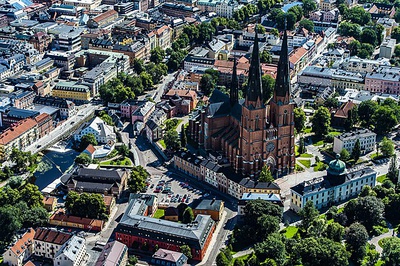Teresa Petrik bei der 5th European Labour History Network Conference
- https://www.ruralhistory.at/de/veranstaltungen/sonstige-veranstaltungen/wages-whips-and-prayers-intersecting-fields-of-coercion-in-the-vienna-prison-workhouse-1760-1783
- Wages, Whips, and Prayers: Intersecting Fields of Coercion in the Vienna Prison Workhouse, 1760–1783
- 2024-06-12T09:00:00+02:00
- 2024-06-12T10:30:00+02:00
- Teresa Petrik bei der 5th European Labour History Network Conference
-
Was
Termin -
Wann
12.06.2024 von 09:00 bis 10:30 (Europe/Vienna / UTC200) -
Wo
Uppsala University - Web Externe Webseite besuchen
-
Termin zum Kalender hinzufügen
iCal
The prison workhouses of early modern Europe have been the subject of much literature. They have mostly been described in terms of the role they played in the ‘birth of the prison’, and their (supposedly) novel approach to the use of labour as a punishment. The practices surrounding the administration of the workhouse, however, reveal a more complicated image; one that makes us question the singularity of the workhouse as a site of coercion. Far from being the ‘total institution’ it has often been imagined as, the prison workhouse in Vienna functioned as an intersecting point of a variety of different institutions of confinement, punishment, banishment, and care. The Zuchthaus of Vienna (later renamed Zucht- und Arbeitshaus), founded in 1671, occupied a special position within these fields, both due to its role as a showcase institution in the capital of the Habsburg monarchy, as well as its geographical location near the eastern border of the monarchy.
In her contribution at the 5th European Labour History Network Conference, Teresa Petrik examines the prison workhouse in the context of the ‘coercive networks’ of the early modern Habsburg monarchy, focusing on the spatial dynamics shaping both the punitive practices within the prison workhouse and connecting it to other sites. Thereby, the use of the institution as a flexible instrument of power, utilised and modified by different authorities in different historical situations becomes apparent. In order to do so, Petrik follows the administrative trail of the Vienna Zuchthaus and its inmates from 1760 to 1783, investigating royal decrees, instructions, as well as reports exchanged between different bureaucratic actors.
The contribution is based on the presenter’s MA thesis at the University of Vienna, which was developed in the context of the COST Action “Worlds of Related Coercions in Work (WORCK)” (CA18205).
Symbolbild: Wikimedia Commons.
